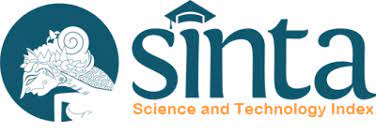EXPORT SALES, FIRM AGE, AND REVENUE GROWTH : THEIR IMPACT ON FINANCIAL PERFORMANCE WITH DEBT MATURITY AS A MODERATOR IN INDONESIAN MANUFACTURING FIRMS
Abstract
This research investigates the impact of export sales, firm age, and revenue growth on the financial performance of manufacturing companies in the miscellaneous industry sector listed on the Indonesia Stock Exchange (IDX) during 2019–2023, while examining the moderating role of debt maturity. The research highlights the significance of growth strategies and debt structure management in enhancing firm performance amid global competition. A quantitative approach is employed using multiple linear regression and Moderated Regression Analysis (MRA) on a sample of 30 purposively selected companies over five years. The results show that export sales do not significantly influence financial performance, whereas firm age and revenue growth have a significant positive effect. Collectively, the independent variables significantly influence financial performance. Debt maturity moderates the relationship by strengthening the effect of revenue growth and weakening the effect of firm age, while it does not moderate the impact of export sales. These findings offer theoretical contributions to financial management literature and practical insights for corporate decision-makers in managing long-term debt and designing effective growth strategies. The research also lays the groundwork for future research involving external macroeconomic variables as potential moderators.
Keywords : Export Sales, Firm Age, Revenue Growth, Financial Performance, ROA, Debt Maturity, ..Moderated Regression
Downloads
References
Abor, J. (2005). The effect of capital structure on profitability: An empirical analysis of listed firms in Ghana. Journal of Risk Finance, 6 (5), 438–445.
Adisamartha, I. B. R., & Mimba, N. P. S. H. (2022). Pengaruh pertumbuhan pendapatan, profitabilitas dan capital intensity terhadap penghindaran pajak. E-Jurnal Akuntansi, 32 (7), 1757–1771.
Alipour, M., Mohammadi, M. F. S., & Derakhshan, H. (2015). Determinants of capital structure: An empirical study of firms in Iran. International Journal of Law and Management, 57 (1), 53–83.
Al-Najjar, B., & Taylor, P. (2008). The relationship between capital structure and ownership structure: New evidence from Jordanian panel data. *Managerial Finance, 34 (12), 919–933.
Brigham, E. F., & Houston, J. F. (2019). Dasar-dasar manajemen keuangan (14th ed., A. Subekti & E. Mulyono, Trans.). Salemba Empat.
Damayanti, T. R. (2014). Pengaruh corporate governance terhadap struktur modal pada perusahaan manufaktur. Jurnal Akuntansi Multiparadigma.
Fahmi, I. (2013). Pengantar manajemen keuangan. Alfabeta.
Frank, M. Z., & Goyal, V. K. (2009). Capital structure decisions: Which factors are reliably important. Financial Management, 38 (1), 1–37.
Ghozali, I., & Ratmono, D. (2017). Analisis multivariat dan ekonometri: Teori, konsep, dan aplikasi dengan EViews 10. Badan Penerbit Universitas Diponegoro.
Ghozali, I. (2018). Aplikasi Analisis Multivariate dengan Program IBM SPSS 25. Badan Penerbit Universitas Diponegoro.
Gitman, L. J., & Zutter, C. J. (2012). Principles of managerial finance (13th ed.). Pearson.
Hanafi, M. M., & Halim, A. (2018). Analisis laporan keuangan (5th ed.). UPP STIM YKPN.
Harris, M., & Raviv, A. (1991). The theory of capital structure. Journal of Finance, 46 (1), 297–355.
Jensen, M. C., & Meckling, W. H. (1976). Theory of the firm: Managerial behavior, agency costs, and ownership structure. Journal of Financial Economics, 3 (4), 305–360.
Jogiyanto, H. M. (2013). Metodologi penelitian bisnis: Salah kaprah dan pengalaman-pengalaman. BPFE Yogyakarta.
Kasmir. (2016). Analisis laporan keuangan. Raja Grafindo Persada.
Modigliani, F., & Miller, M. H. (1958). The cost of capital, corporation finance and the theory of investment. American Economic Review, 48 (3), 261–297.
Myers, S. C. (1984). The capital structure puzzle. The Journal of Finance, 39 (3), 575–592.
Myers, S. C., & Majluf, N. S. (1984). Corporate financing and investment decisions when firms have information that investors do not have. Journal of Financial Economics, 13 (2), 187–221.
Puspita, R., & Rahayu, S. (2017). Pengaruh good corporate governance terhadap nilai perusahaan dengan kinerja keuangan sebagai variabel intervening. Jurnal Ilmu dan Riset Akuntansi, 6 (4).
Rachmawati, N. D., & Triatmoko, H. (2007). Analisis faktor-faktor yang mempengaruhi kualitas laba dan implikasinya terhadap nilai perusahaan. Simposium Nasional Akuntansi, Makassar.
Rajan, R. G., & Zingales, L. (1995). What do we know about capital structure? Some evidence from international data. The Journal of Finance, 50 (5), 1421–1460.
Sartono, A. (2016). Manajemen keuangan: Teori dan aplikasi (4th ed.). BPFE-Yogyakarta.
Septian, R. D., & Raharja, S. J. (2012). Pengaruh struktur kepemilikan terhadap nilai perusahaan dengan keputusan keuangan sebagai variabel intervening. Diponegoro Journal of Accounting, 1 (2).
Siregar, S. V., & Utama, S. (2008). Type of earnings management and the effect of ownership structure, firm size, and corporate-governance practices: Evidence from Indonesia. The International Journal of Accounting, 43 (1), 1–27.
Sugiyono. (2017). Metode penelitian kuantitatif, kualitatif dan R&D.
Ting, I. W. K., Kweh, Q. L., & Chan, Y. C. (2014). Debt maturity structure and firm performance: Evidence from Malaysia. Mathematical Problems in Engineering, 2014, 1–7
www.idx.co.id accessed on April 18, 2025










